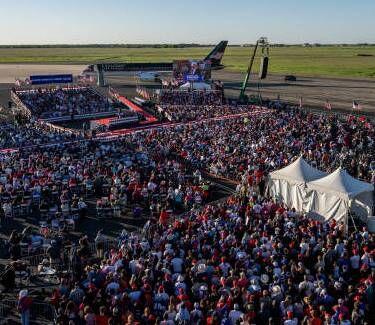By Brandon Bell
Source: www.insideradio.com, July 2023
Radio is forecast to book $400 million in political advertising in the 2024 election cycle, according to new numbers released by Vivvix CMAG, which has been tracking election ad spend since 1996. That’s one-third more than radio’s haul in the 2022 mid-term election. While radio’s take is, once again, dwarfed by broadcast TV ($5 billion) and fast-growing connected TV ($1.8 billion), Steve Passwaiter, VP, Growth and Strategy and Senior Advisor to Vivvix CMAG, points out that radio’s number could be larger if broadcasters tap into local races, where stations enjoy close relationships with the candidates.
It has become cliché to say the 2024 election cycle, which is well underway, will shatter previous election ad spend totals. “That’s been the norm since Citizens United and has prompted an ongoing increase in fundraising and ad spending,” Passwaiter writes in a piece for Ad Age. “This cycle will not be the end of that growth.”
Vivvix CMAG projects political fundraising to hit $19 billion in the 2024 cycle with the potential for more. The firm is forecasting – are you sitting down? – about $11.5 billion in ad spending across all forms of ads for this election cycle. And that, it notes, is a conservative estimate.
So far, Vivvix CMAG has tracked over $200 million in spending on issues and races across the country. The total includes almost $70 million invested in the presidential contest, which has been mainly directed to cable news networks and early primary states. The lion’s share so far has come from the Republican primary players, who have committed about $60 million of that total through July 10.
“It’s still early and there are matters to be resolved but the early indications are leaning towards another loud, noisy and expensive political season,” Passwaiter says.
He and the analysts at Vivvix CMAG are keeping an eye on state Supreme Court races after the one in Wisconsin drove nearly $30 million in spending. The political intelligence firm believes that is a “a harbinger of things to come” in contests where the winning candidate will determine ideological control of the court.
Where will the brunt of the forecasted $11.5 billion in political dollars end up in 2024? The presidential race will account for a significant piece, especially as swing states continue to evolve. For the 2024 presidential contest, they are expected to be Arizona, Georgia, Nevada, Pennsylvania, North Carolina, Michigan, and Wisconsin. Ohio and Florida, once longtime swing states, “now appear to be rather comfortably red given recent election results,” Passwaiter says.
Here’s how some of the 2024 election dollars are expected to be spent, based on Vivvix CMAG data published by Ad Age:
- Broadcast TV (local/network): $5 billion ($4.5 billion in 2020)
- Connected TV/streaming: $1.8 billion (about $1 billion in ’22)
- Google/Facebook: $1.6 billion ($1.2 billion in ’22)
- Cable/satellite (local/network): $1.5 billion ($1.5 billion in 2020)
- Radio: $400 million (more local dollars helps)
Radio’s reach still tops all other media, but politicians are notoriously fused to TV. Rather than fight for up-ballot dollars, Passwaiter thinks radio should stay local. “Radio needs to go for its share close to home,” he told Inside Radio during the 2020 election cycle. It’s a message that still very much rings true today. “That’s in the local races where they have an opportunity to have a bigger influence on the people that are making the decisions than you do in Washington with the big shots,” Passwaiter said.

